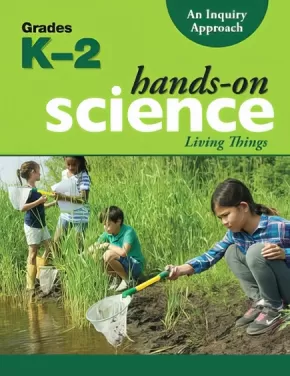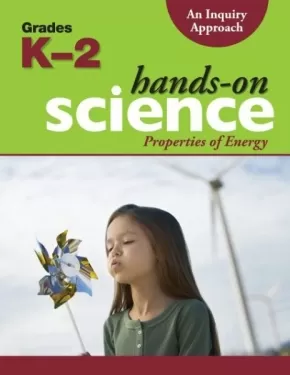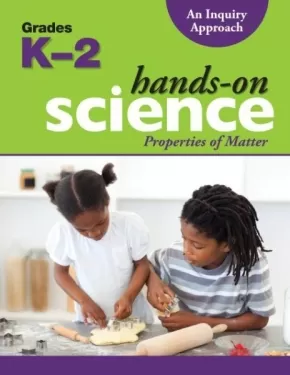Deidre Sagert
Deidre Sagert specializes in early years education, and is currently working as the Early Years Support Teacher for the St. James-Assiniboia School Division. She brings 20 years of experience to her current role where she mentors early years teachers in incorporating play-based learning and inquiry into all subject areas. She is passionate about ensuring all students have access to a stimulating environment where they are engaged in hands-on experiences and authentic learning. She enjoys spending time with her family in nature for rejuvenation and inspiration.
Books (3)
Synopsis:
Living Things from Hands-On Science: An Inquiry Approach completely aligns with the redesigned Science Curriculum for British Columbia. Grounded in the Know-Do-Understand model, First Peoples’ knowledge and perspectives, and student-driven scientific inquiry, this custom-written resource:
- emphasizes Core Competencies, so students engage in deeper and lifelong learning
- develops Curricular Competencies as students explore science through hands-on activities
- fosters a deep understanding of the Big Ideas in science
Using proven Hands-On features, Living Things contains information and materials for both teachers and students including: Curricular Competencies correlation charts; background information on the science topics; complete, easy-to-follow lesson plans; reproducible student materials; and materials lists.
Innovative new elements have been developed specifically for the new curriculum:
- a multi-age approach
- a five-part instructional process—Engage, Explore, Expand, Embed, Enhance
- an emphasis on technology, sustainability, and personalized learning
- a fully developed assessment plan for summative, formative, and student self-assessment
- a focus on real-life Applied Design, Skills, and Technologies
- learning centres that focus on multiple intelligences and universal design for learning (UDL)
- place-based learning activities, Makerspace centres, and Loose Parts
In Living Things students investigate plants and animals. Core Competencies and Curricular Competencies will be addressed while students explore the following Big Ideas:
- Plants and animals have observable features.
- Living things have features and behaviours that help them survive in their environment.
- Living things have life cycles adapted to their environment.
Educator Information
This book is from the Hands-On Science: An Inquiry Approach (for BC) series. The new Hands-On Science comprehensive resources completely align with the redesigned Science Curriculum for British Columbia.
Recommended for use with children ages 4-8.
Additional Information
150 pages | 8.5 " x 11"
Synopsis:
Properties of Energy from Hands-On Science: An Inquiry Approach completely aligns with the redesigned Science Curriculum for British Columbia. Grounded in the Know-Do-Understand model, First Peoples’ knowledge and perspectives, and student-driven scientific inquiry, this custom-written resource:
- emphasizes Core Competencies, so students engage in deeper and lifelong learning
- develops Curricular Competencies as students explore science through hands-on activities
- fosters a deep understanding of the Big Ideas in science
Using proven Hands-On features, Properties of Energy contains information and materials for both teachers and students including: Curricular Competencies correlation charts; background information on the science topics; complete, easy-to-follow lesson plans; reproducible student materials; and materials lists.
Innovative new elements have been developed specifically for the new curriculum:
- a multi-age approach
- a five-part instructional process—Engage, Explore, Expand, Embed, Enhance
- an emphasis on technology, sustainability, and personalized learning
- a fully developed assessment plan for summative, formative, and student self-assessment
- a focus on real-life Applied Design, Skills, and Technologies
- learning centres that focus on multiple intelligences and universal design for learning (UDL)
- place-based learning activities, Makerspace centres, and Loose Parts
In Properties of Energy students investigate properties of energy. Core Competencies and Curricular Competencies will be addressed while students explore the following Big Ideas:
- The motion of objects depends on their properties.
- Light and sound can be produced and their properties can be changed.
- Forces influence the motion of an object.
Educator Information
This book is from the Hands-On Science: An Inquiry Approach (for BC) series. The new Hands-On Science comprehensive resources completely align with the redesigned Science Curriculum for British Columbia.
Recommended for use with children ages 4-8.
Additional Information
181 pages | 8.5 " x 11"
Synopsis:
Properties of Matter from Hands-On Science: An Inquiry Approach completely aligns with the redesigned Science Curriculum for British Columbia. Grounded in the Know-Do-Understand model, First Peoples’ knowledge and perspectives, and student-driven scientific inquiry, this custom-written resource:
- emphasizes Core Competencies, so students engage in deeper and lifelong learning
- develops Curricular Competencies as students explore science through hands-on activities
- fosters a deep understanding of the Big Ideas in science
Using proven Hands-On features, Properties of Matter contains information and materials for both teachers and students including: Curricular Competencies correlation charts; background information on the science topics; complete, easy-to-follow lesson plans; reproducible student materials; and materials lists.
Innovative new elements have been developed specifically for the new curriculum:
- a multi-age approach
- a five-part instructional process—Engage, Explore, Expand, Embed, Enhance
- an emphasis on technology, sustainability, and personalized learning
- a fully developed assessment plan for summative, formative, and student self-assessment
- a focus on real-life Applied Design, Skills, and Technologies
- learning centres that focus on multiple intelligences and universal design for learning (UDL)
- place-based learning activities, Makerspace centres, and Loose Parts
In Properties of Matter students investigate matter. Core Competencies and Curricular Competencies will be addressed while students explore the following Big Ideas:
- Humans interact with matter every day through familiar materials.
- Materials can be changed through physical and chemical processes.
- Matter is useful because of its properties.
Educator Information
This book is from the Hands-On Science: An Inquiry Approach (for BC) series. The new Hands-On Science comprehensive resources completely align with the redesigned Science Curriculum for British Columbia.
Recommended for use with children ages 4-8.
Additional Information
150 pages | 8.5" x 11"









